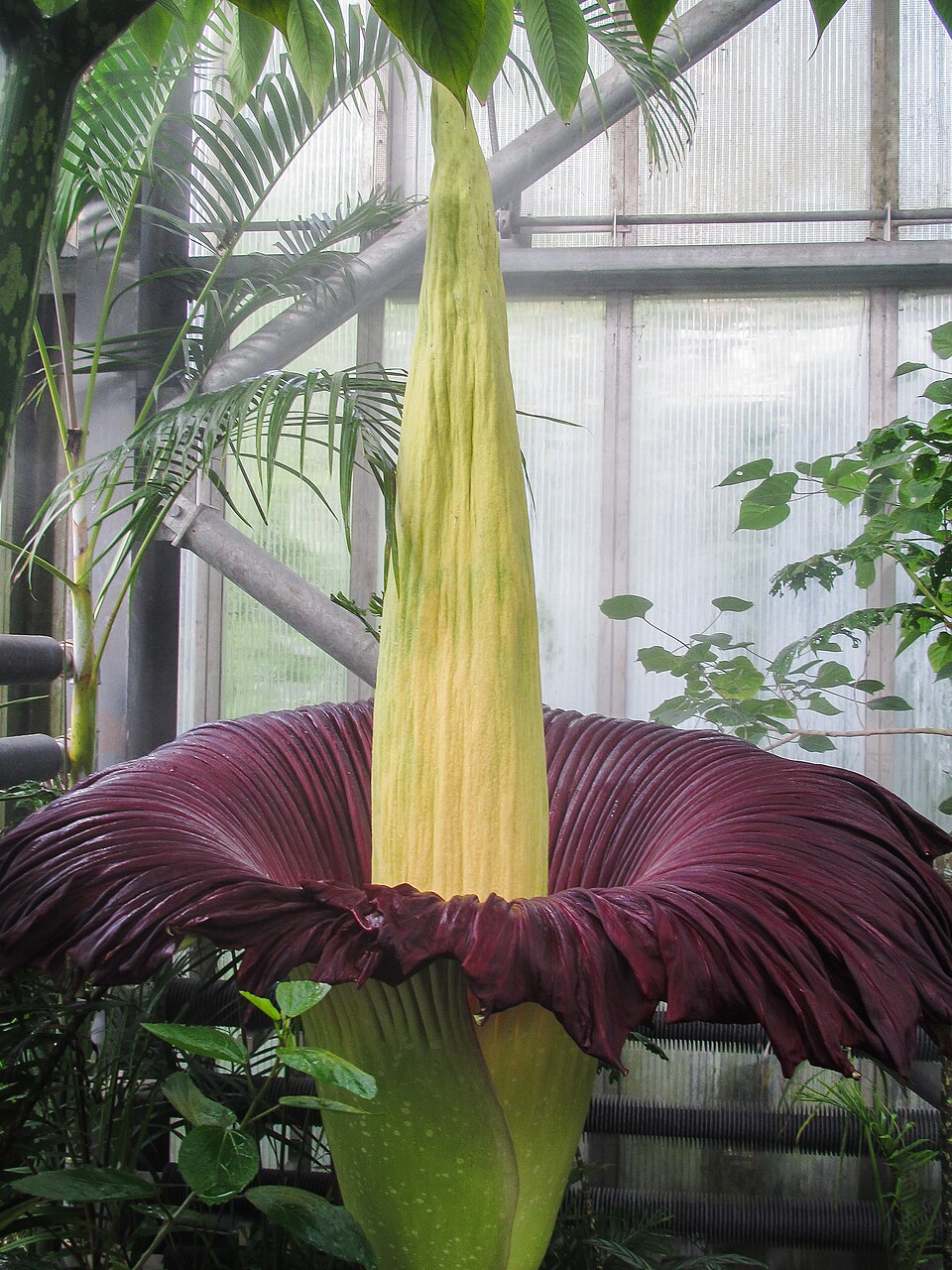
Titan Arum bloom at Paignton Zoo
Credit: Gina Franchi/WikiCommons
AGU News
AGU prevails in case for probationary federal employees
In a blistering decision last Friday, a federal judge ruled that the Trump Administration and the Office of Personnel Management acted illegally when it fired tens of thousands of probationary federal employees at NOAA, NSF, and other agencies “for cause” in February. AGU joined a coalition of plaintiffs in March to defend the federal scientific workforce against these actions. [press release]
Save the dates for upcoming science conferences
- AGU25 Annual Meeting: Where Science Connects Us, 15-19 December 2025, New Orleans, Louisiana, USA [registration open!]
- Ocean Science Meeting 2026, 22-27 February, Glasgow, Scotland [registration open!]
- Astrobiology Science Conference 2026, 17-22 May, Madison, Wisconsin, USA
- JpGU-AGU Joint Meeting 2026, 24-29 May, Chiba, Japan
Featured Research
Stink, stank, stunk: how the corpse flowers may lose their pungency
The corpse flower, or the Titan arum, is known for the incredible rotting meat smell it produces when it blooms. The female bloom of the corpse flower releases methanethiol, a stinky gas that forms as things rot, at a rate comparable to the air over landfills. The male bloom is not as strong, and researchers discovered it relies on the female bloom’s stronger smell to attract the bugs before trapping them in the bloom to hold until the male blooms later in the day. However, if air pollution continues to worsen, scientists found the stink of the corpse flowers will lessen and may not be enough to attract bugs to pollinate. [Geophysical Research Letters study][The Conversation author commentary]
The AVENGERS initiative aims to uncover how Venus and Earth’s histories divided
For upcoming missions to Venus, researchers are setting their sights on possible extinct volcanoes and lava flows. The AVENGERS international initiative will explore if Venus was once similar to Earth, and what may have caused the second planet from the sun to develop its thick carbon dioxide atmosphere. They hope these research sites will help with understanding how rocky planets evolved and if Venus is still geologically active. [JGR Planets review]
Extreme heat in U.S. cities revealed at high resolution
Data from personal weather stations power a novel way to detect urban heat islands. [Eos research spotlight][GeoHealth study]
When is a climate model “good enough”?
Models will always have bugs. How do scientists decide which ones are most important and how many is too many? [Eos research spotlight][Earth’s Future study]
New perspectives on energy sinks during seismic events
Laboratory earthquakes shed new light on energy partitioning during earthquakes, which is allocated to seismic radiation, creation of new surfaces, and heat dissipation. [Eos editors’ highlights][AGU Advances study]
Gravity with an “edge”: what lies beneath Aristarchus Crater
A method combining three different approaches to the processing and analysis of GRAIL data from the Moon defines areas of sharply contrasting densities beneath Aristarchus Crater. [Eos editors’ highlights][Earth and Space Science study]